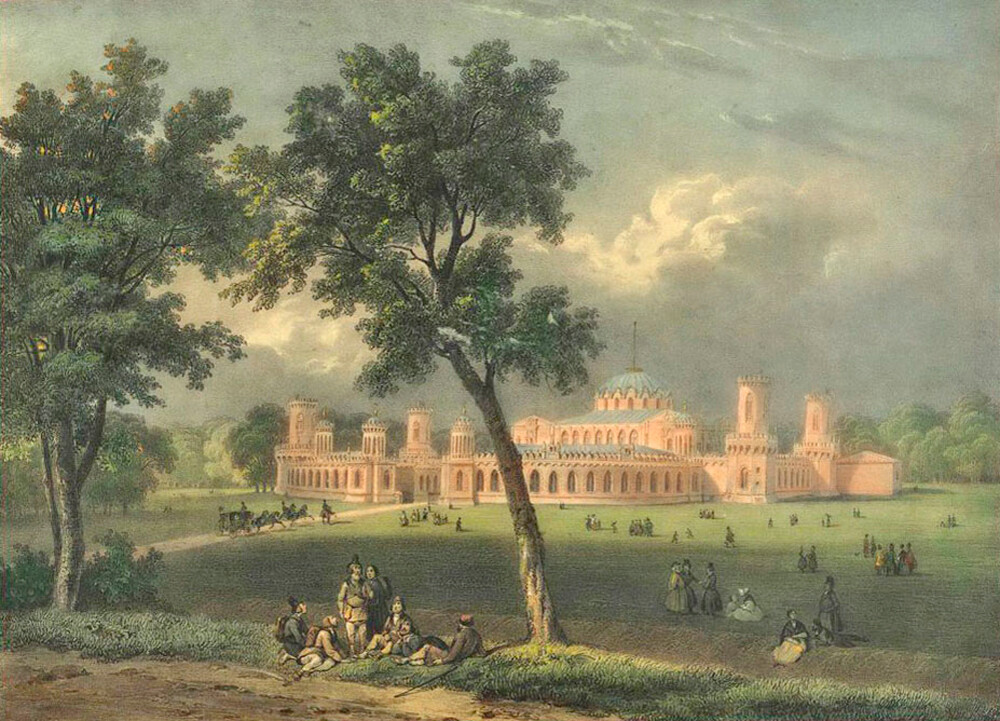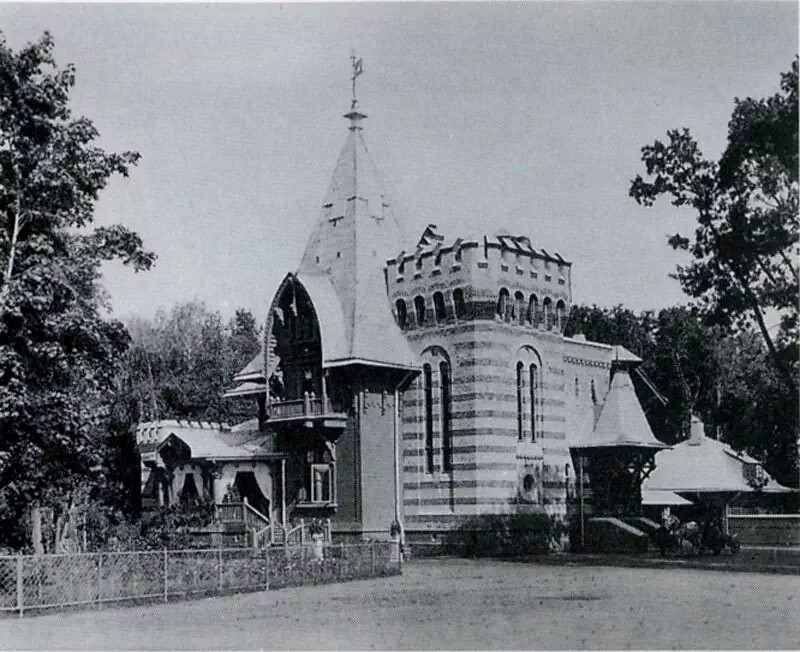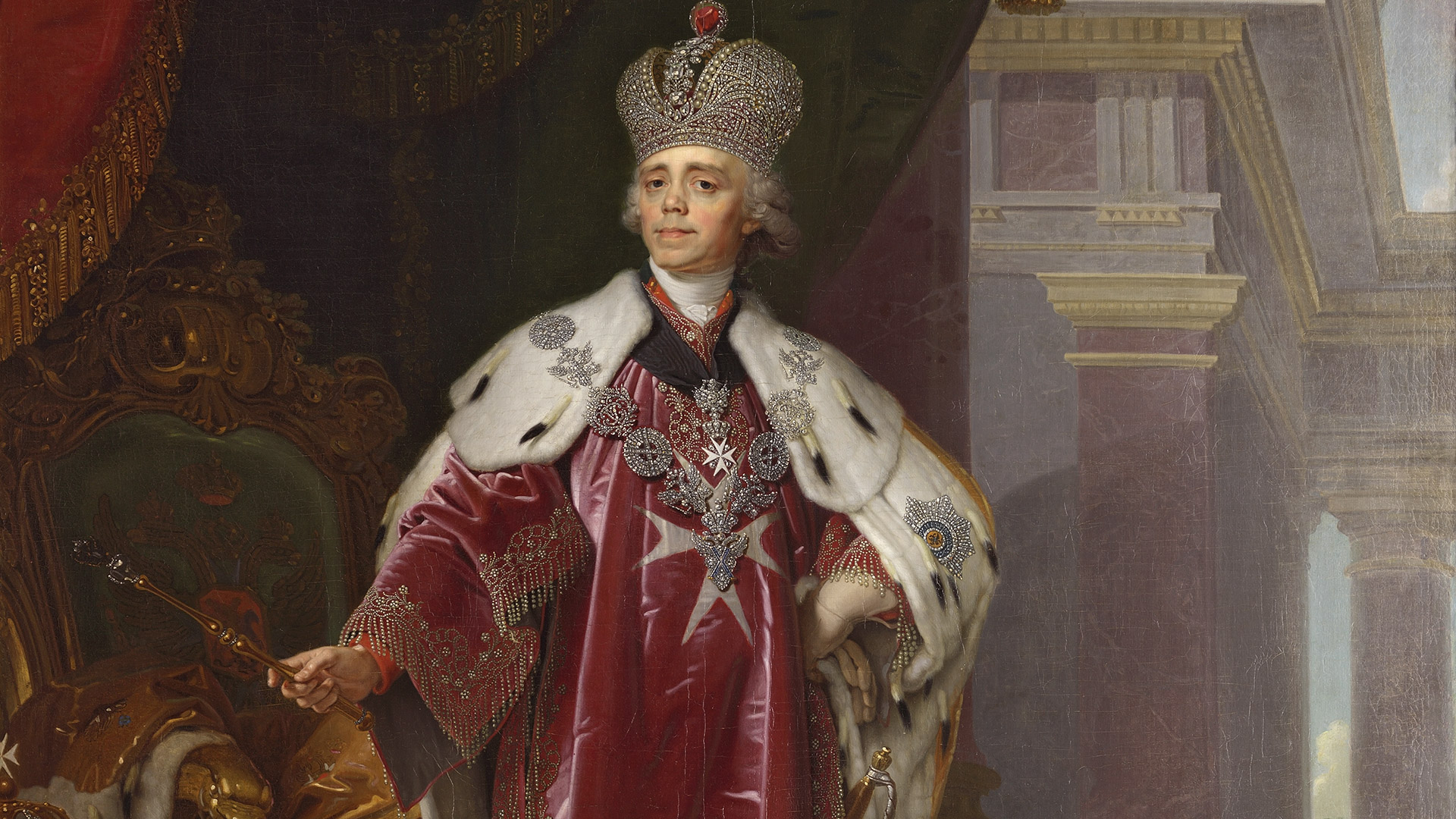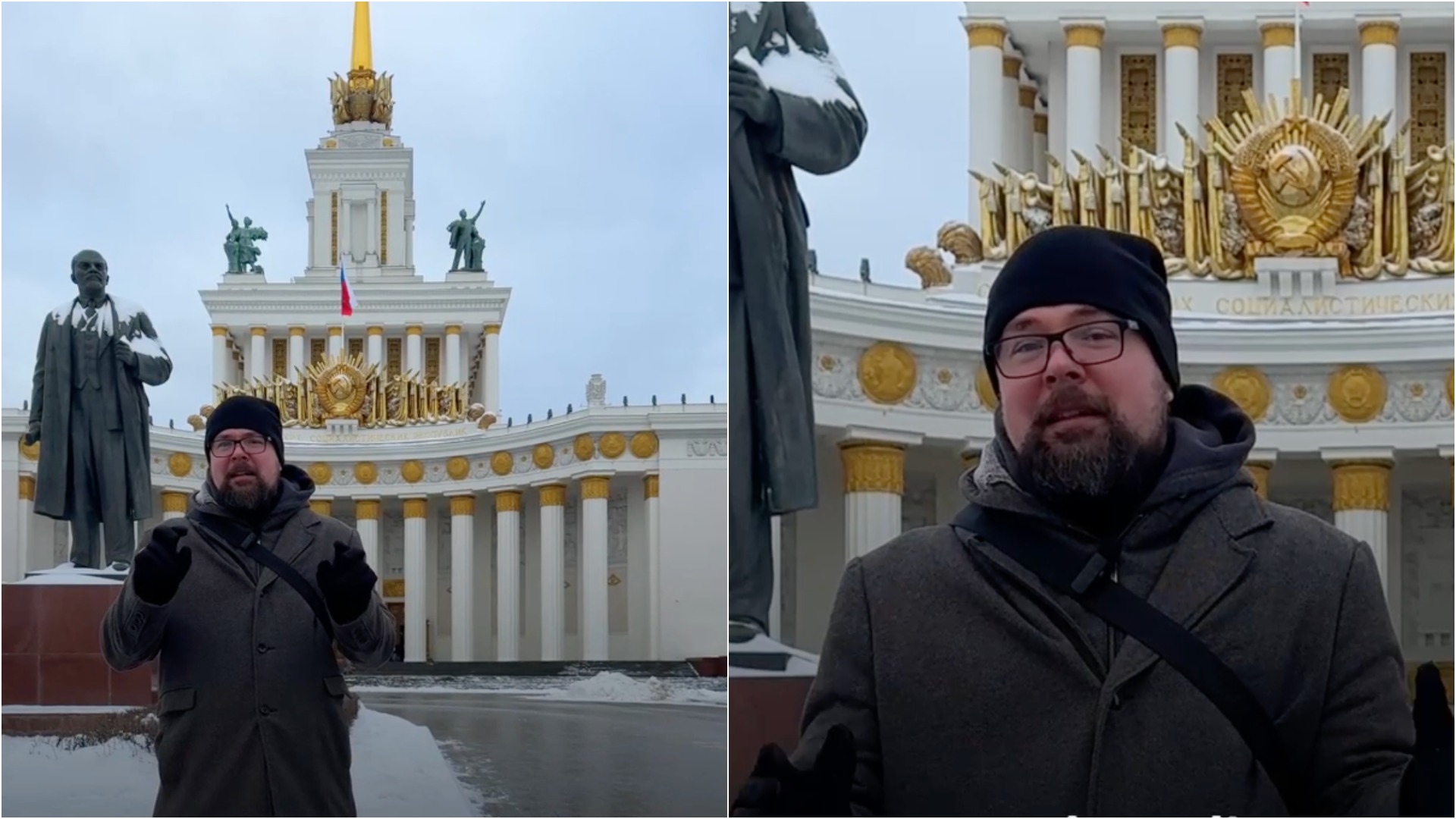
Top 5 places to hang out in Moscow… 150 years ago!

Much like today, imperial era Muscovites tried to escape the city center in summer. First of all, because of the dust and sand, which blanketed city streets with the onset of heat, life in the summer Moscow was often overwhelming and suffocating. Even in the city center, only a few streets were paved with stone – the rest resembled dusty country lanes. Every passing carriage raised a cloud of acrid yellow dust. Therefore, people longed for rest and relaxation closer to the outskirts of the city – Sokolniki and Petrovsky Park.
Back then, contemporary parks such as Tsaritsyno, Kuskovo, Vorobyovy Gory, Kuzminki and Kolomenskoye were not even suburbs; they were country parks and forests.
Here are five of the most fashionable places where 19th-century Muscovites often enjoyed taking walks and having fun.
1. The meadows of Novinskaya Embankment
 Swings in Moscow. Detail of the engraving "A carnival near Novinskoye" from the album "Moscow and Muscovites" by Nikolay Naidyonov, 1883
Swings in Moscow. Detail of the engraving "A carnival near Novinskoye" from the album "Moscow and Muscovites" by Nikolay Naidyonov, 1883
Location: modern-day Novinsky Boulevard – Smolenskaya Embankment
For whom: for all
Entertainment: street theaters, performances and refreshments for the common people; carriage rides for the nobility.
The Novinsky meadow festivities were held during Easter week in the area of today's Novinsky Boulevard, on a vast field along the banks of the Moscow River (now Smolenskaya Embankment). The focal point of festivities for the common folk was a large tent, the so-called "bell", which had a green fir tree as a spire that was a sign of liquor sales. There, writes historian Pyotr Sytin, "vodka was sold from barrels by 'crockpots' and 'hooks'” – special measures of the time, which were roughly equal to glasses and shot glasses, respectively.
In the field, taverns, mobile menageries, and booths were set up, and sweets and snacks were often on sale. In 1841, Sytin wrote, "two carousels, 11 swings, two carousels with baby carriages, 10 circuses" were in operation. Entertainment was available even to the poorest of people – on the third day, all rides and circus shows were free.
 "A carnival under Novinskoye," engraving from Nikolay Naydenov's album "Moscow and Muscovites," 1883. Note the high-spired tent in the center, that's where the drinks and beverages were sold.
"A carnival under Novinskoye," engraving from Nikolay Naydenov's album "Moscow and Muscovites," 1883. Note the high-spired tent in the center, that's where the drinks and beverages were sold.
The fourth day of festivities in Novinsky was for high society – there was a specially arranged circle with carriage rides during the day for merchants; while in the evening the rides were solely for the noble elite. Memoirist Peter Vistenhof described this day: "Carriage rides rushed to Novinskoye; first the merchants, then the nobility, and the carriage festivities continued until sunset. Young men, like sparrows on a perch, sit on the railing (of the circle - RB), burbling, criticizing, looking at the pretty Muscovite women through binoculars, and if the beauty interests the dandy, then he would lean with an air of importance on the handle of the carriage door, with the hem of his fashionable cloak thrown over his shoulder. He walks by the carriage, and at the same time lavishes French compliments, sometimes with the greatest grammatical mistakes.”
2. Petrovsky Park
 View of the Petrovsky Palace in Moscow. Lithograph by E. Ostein and J.-W. Adam. 1840s
View of the Petrovsky Palace in Moscow. Lithograph by E. Ostein and J.-W. Adam. 1840s
Location: Petrovsky Park and its surroundings
For whom: the nobility
Entertainment: carriage rides, restaurants and musical concerts
The Park (this is how Muscovites casually called it, with a capital letter) was officially founded during the reconstruction of Moscow after the fire of 1812. Petrovsky Park was planned by a famous Scottish park architect Adam Menelaws, who also designed the park in Tsarskoe Selo, the summer residence of the Russian royal family. The park surrounded the Petrovsky Palace, which was founded by Catherine the Great in 1780 to commemorate the victory in the Russo-Turkish war.
The park was made exclusively for the nobility, and until the middle of the century it was forbidden to build any taverns and drinking pavilions there so as not to attract the common people. Then, in the middle of the century, chic restaurants appeared there. Nearby was the famous night club and cabaret, “Yar” (built on the site of today's Sovetskaya Hotel), which was where the children of the elite of that era used to party. The buildings of the restaurants "Mauritania" and "Eldorado" also survive to this day.
 Petrovsky Park. The summer house of Ivan Morozov. Photo 1896
Petrovsky Park. The summer house of Ivan Morozov. Photo 1896
In 1836, by order of Emperor Nicholas I, the state began giving out 5,000-ruble mortgages for a period of ten years in order to assist members of the nobility who wanted to buy plots of land near the Park. The condition was "to complete within three years a two-storeyed house of good architecture with a mezzanine, entresol and under an iron roof". From that time, luxury villas began to appear in the Park, for example, the villa "Black Swan" of the Ryabushinsky family that survives to this day.
There was a circle in the center of the park for carriage riding, but in Petrovsky, of course, this was only for the upper class. The merchant Alexander Ushakov, who visited the park in the 1860s, wrote: "The park is a respectable place. The carriages, the horses, the society in the majority are impeccable. The language is French, and the fashions, especially the men's, are English. The park has its own society, which is especially conspicuous on weekdays. For the most part it does not mingle with the crowd.”
 Sleigh races in Petrovsky Park. Unknown artist, 1830s-1840s
Sleigh races in Petrovsky Park. Unknown artist, 1830s-1840s
Also, the park had a building called the "Voksal," the name of which derived from the famous public garden Vauxhall near London; it was a summer pavilion for theatrical productions and concerts. “Covered wide terraces, fine galleries, clean beautiful rooms, and a huge hall with truly elegant architecture," is how contemporary Mikhail Zagoskin described this building. "A good supper, music for those who wish to dance, an excellent gypsy choir for those who like gypsy songs, military band and fireworks for all."
3. Sokolniki
 A weekend in Sokolniki, 1879, Nikolai Chekhov
A weekend in Sokolniki, 1879, Nikolai Chekhov
Place: Sokolniki Park
For whom: for all
Entertainment: tea and alcohol, walks and carriage rides, shows and attractions
"Craftsmen and merchants do not like [Petrovsky] Park," wrote Mikhail Zagoskin. These people preferred the festivities in Sokolniki, which began on May 1. Ever since the time of Peter the Great, the Moscow Germans had chosen the groves of Sokolniki to celebrate their May Tree festival. Shiryaevo Field, a large meadow where once, according to legend, the favorite falcon of Tsar Alexei Mikhailovich named ‘Shiryai’ fell to the ground during a hunt, eventually became a place of popular festivities, just like Novinskoye.
 Tea pavilion in Sokolniki, late 19th century
Tea pavilion in Sokolniki, late 19th century
A tent was erected in the field, where the governor then arrived and treated the selected noble public to the music of a military band. Next, the guests of honor sat in carriages and began to ride around the field, where people were having fun to their utmost. On one of these days, according to historian Vera Bokova, the program was as follows:
1. Rope-walker Yegorka Shelaput will walk on a rope with a hot samovar on his head;
2. The performer of Russian dances Fedya Udaloy;
3. Grigory Kolchan – bass from Pavlovsky Posad;
4. Sword swallower and magician Arigotti, who eats burning oakum and drinks tar;
5. Ondrushka and Mitrodora will sing country songs with dancing, Chakrygin will play along on the harmonium;
6. "Oranges, lemons are good" will be sung by Lazarev, a descant;
7. Feoktistov will play balalayka;
8. The 18-member choir "Russian Razdolie" will sing and dance.
In Sokolniki, common people had a tradition – to drink tea while sitting right on the ground. According to Vera Bokova, nearby residents – "samovar women" who were usually soldier’s widows – offered the crowd hot water from boiling samovars, tea, sugar, and utensils.
 Spring in Sokolniki, 1900s
Spring in Sokolniki, 1900s
"The Russian man by nature does not like artificiality, there is little room for him in a regular garden, he is most averse to a fence behind bushes of greenery; on the contrary, he loves the forest, grove, and field," noted Alexander Ushakov. "Those who leave for Sokolniki in the morning take along so many edible and drinkable things that they could subsist for a week.”
Another Muscovite, the opera tenor Pavel Bogatyrev also wrote that "these festivities [in Sokolniki] were held amidst the dust that piled up in the air, amidst the hubbub of the partying people, and people left dazed with wine, shouting, and screaming.”
4. Maryina Roshcha
 Maryina Roshcha on the Trinity week, V. Astakhov, 1852
Maryina Roshcha on the Trinity week, V. Astakhov, 1852
Place: Maryina Roshcha district
For whom: For the common people
Entertaining: drinking tea and alcohol, walking and carriage rides, watching shows
According to legend, Maryina Roscha (Maria’s Grove) was named in honor of a woman by the name of Marya, who was the formidable head of a criminal gang. The grove consisted almost entirely of birches, and festivities at this site were originally related to the ancient tradition of remembering the dead on the Semik – the seventh Thursday after Easter, which was three days before ‘Saturday of Souls,’ or the Saturday of the Holy Trinity.
This holiday was not Orthodox, but rather it was a pagan one, and the central place in this ritual was occupied by a birch tree. Historian Tatyana Biryukova writes: "At first a birch was shaken, a high branch was caught and tied with the branch of a nearby tree. This is how a ‘wreath’ was formed. Then, the girls in pairs walked under these branches three times, exchanged light kisses, and exchanged their crosses."
READ MORE: Pagan burial rituals of ancient Russia
The wreaths remained woven for a whole week. For as long as anyone could remember, people were scared to approach these trees; they even avoided them, since it was said that rusalki would sit on the curled wreaths. ‘Rusalki’ here means the souls of the deceased who roam the earth during Trinity week, and it was necessary to see them off by holding a loud funeral feast. These beliefs had existed among Russians in pre-Christian times, and they proved to be very deep-rooted and widespread.
 Semik in Maryina Roshcha, A. Grachev
Semik in Maryina Roshcha, A. Grachev
Therefore, on Trinity week, in the beginning of June, after commemorating their dead in the cemeteries, Muscovites went out and celebrated. Not far from Maryina Roscha there was a large cemetery, Lazarevskoe, where people who had died by suicide, as well as unclaimed and unidentified bodies, were buried. Ancient traditions were preserved mostly by the common people, so the festivities in Maryina Roscha were purely for simple folk. The nobility came here only to see the huge, daring peasant round dances.
"In this Maryina Grove everything boils with life and everything reminds one of death. Here, among the ancient graves, the boisterous chorus of gypsy women rumbles; there, on a tombstone, stands a samovar, bottles of rum, and Russian merchants feast," wrote Mikhail Zagoskin. "Here, at the very hill behind which the grave crosses of Lazarev's cemetery rise, a daring round dance song is heard; all around the dead sleep soundly, while the crowd of the living, looking on carelessly at this bed of woe, sorrow, and decay, walks, laughs, and goes wild, not thinking in the least about death."
5. The Old Simonov monastery
 Simonov Monastery. Watercolour by Louis Bichbois from the album "Views of Moscow", 1846
Simonov Monastery. Watercolour by Louis Bichbois from the album "Views of Moscow", 1846
Place: Simonov Monastery
For whom: for all
Entertainment: strolls with views from the high bank of the Moskva River
Founded in the 14th century, Simonov Monastery was one of Moscow’s most important monasteries and sacred sites. The remains of Peresvet and Oslyabya, the Russian warriors who fought at the Battle of Kulikovo, were buried here.
In the 1930s most of the monastery's buildings were destroyed by order of the Soviet government as part of its anti-religion campaign, and in its place a factory was built, as well as the grounds of the ZIL Culture Center. That’s why now there’s nowhere to take a walk. But in the 19th century, Old Simonov's meadows were a favorite place among Muscovites to take a promenade – from peasants to the nobility. Why?
 Simonov Monastery, early 20th century
Simonov Monastery, early 20th century
People would come here to look at Moscow from the high bank of today's Krutitskaya Embankment – it was as famous an observation point as the Vorobyovy Gory, only it was much closer to the center. Not only that – here, one could climb the 90-meter bell tower – which was higher than Ivan the Great bell tower in the Kremlin!
 A view from the bell-tower of Simonov monastery, 1913
A view from the bell-tower of Simonov monastery, 1913
"After climbing up to the platform of the tower, we admired the diversity and beauty of the monastery's surroundings for a long time. Straight down the river from the very foot of the hill begins a vast green meadow with small ponds; in its midst, the Moskva River winds in its sandy banks; beyond it stretches all the way to Danilov Monastery, the Serpukhov part of Zamoskvorechye with its gardens and enormous factories. To the right rises the whole Yauza side of Moscow with its stone chambers and splendid churches as an amphitheater. You will turn back, and there in front of you, instead of high hills studded with houses, are broad meadows, dark pine forest, sown fields, picturesque woods, groves, several villages, the Perervinsky monastery and, at the very edge of the sky, the famous village of Kolomenskoye in the distance" – this is how the panorama of Moscow looked from the bell tower of Simonov Monastery, as described by Mikhail Zagoskin.












